Caroline and Jessica Kaplan, a married lesbian couple living in New York City, had very different upbringings, but similar struggles growing up. Jessica was biracial and adopted into a white family in the Midwest, and her parents were conservative, devout Catholics. Caroline was born into a Jewish family that wasn’t particularly religious, but in very conservative Staten Island, New York.
Both were attracted to women from a young age, but neither saw any lesbian or gay visibility in their communities growing up, and if anything, heard anti-gay sentiments. Jessica also felt alone due to her skin color. Feeling out of place, they both stuffed down their feelings and tried to date men, despite there being little attraction. In hopes of denying their true identity, each quietly came out as bisexual.
Both women attended the Fashion Institute of Technology in Manhattan, and on one fateful day at an art store, their paths collided. They were 19 and 20, both struggling with their identities, and they were immediately drawn to each other. Their beautiful relationship helped each of them realize they weren’t bisexual, but lesbian. Coming out wasn’t easy for either of them; Jessica’s family was initially accepting, but many years later, turned their backs on her. Caroline’s family struggled at first, though they eventually came around.
The couple married in 2011, eight years after they started dating. After their wedding, they couldn’t believe it when they received many of the exact same greeting cards from people all across the country — it was apparently the only same-sex wedding card anyone could find. The couple thought it would be impactful to create cards themselves — after all, they were both artistic and loved hand-making their wedding invitations. But they were busy with their careers and set the idea aside.
Then, several years later, after marriage equality passed, Caroline’s aunt married a woman and experienced the exact same thing. The Kaplans were tired of the LGBTQ community not being visible and represented, so they launched their own business, J. Caress Studio. They create LGBTQ greeting cards for all occasions and identities, in addition to gorgeous art prints, custom art and greeting cards, and adult LGBTQ coloring books.
For a while, they ran the business on the side. But after spending years in a well-paying but soul-sucking job that took a massive toll on her health, Caroline quit the corporate world. Now 37, Caroline occasionally does some freelance medical illustration, which she has her masters in, and otherwise focuses on their art business. Jessica, now 35, holds down the fort financially by working several retail jobs and works on the business in her spare time.
They vend at events, sell their work on Etsy, and as the business grows, they hope to soon pick up distribution and be in boutiques around the country. (My partner and I have both bought several of their items for various occasions, including a custom commission, and we’ve been absolutely thrilled with them!)
This is Caroline and Jessica’s story of struggling with their lesbian identity and coming out, finding love and comfort in each other, and creating a unique art business to put more LGBTQ visibility and inclusivity in the world.
Profiles in Pride: I’d love to hear both of your coming out stories; I know they were quite different. Jessica, let’s start with you.
Jessica: I grew up in Akron, Ohio. I was adopted into a white family, and I’m biracial. I have two older sisters, and one younger sister, who is also biracial. I feel like I’ve always kind of known I was a lesbian. But I guess I never thought about it, because I grew up in a very Catholic, religious family.
Growing up, I had that on my plate, I had the fact that I was adopted on my plate, and I had the fact that I was black on my plate. Because where I grew up, it’s not biracial, it’s black or white, and I was the only black kid in my school until high school, so I had to deal with a lot of stuff as a kid. I knew that I was gay, but I kind of just put it aside because so much was on my mind already. I felt like I couldn’t deal with it.
In high school, I told some friends I was bisexual, but not my family. For me at the time, that was like the stepping stone to becoming lesbian, which I feel terrible about now with more awareness. It’s like I was trying to accept myself. “Oh, I can also like guys, so I’m not so bad.”
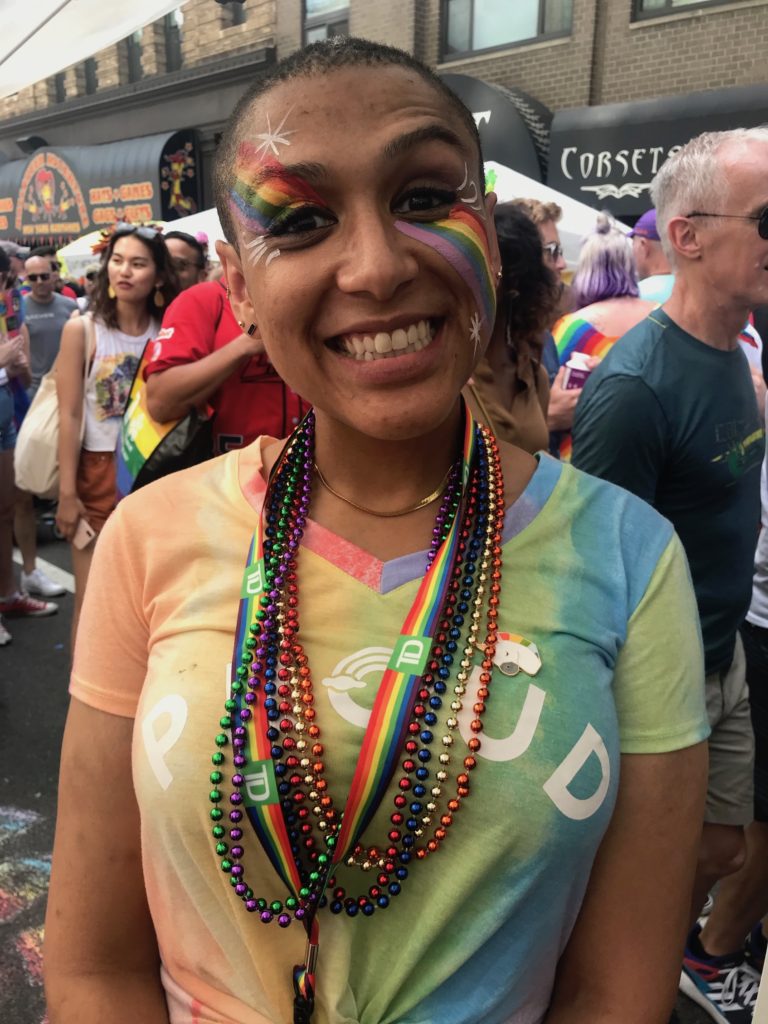
Some of my friends who were girls and I would somehow find ourselves kissing. Hilariously enough, my mom always said, “In high school I always kind of knew, because you’d get so upset when your friends who were girls who would decide to not hang out with you and hang out with their boyfriends instead.” I’d go fucking crazy! And if a guy I was “dating” said they were going to go out with their guy friends, things that straight girls might be upset with, I didn’t give a shit. In hindsight, it makes sense, but I didn’t realize it then, which is why I thought I was bisexual.
Then I came to New York to study interior design. I wanted to escape Ohio and all of the shit there. I wanted to come to New York to try to be myself and find out who I was. And let’s be honest, I know it was to explore my sexuality and experience life without the umbrella of religion. That’s when I met Caroline.
I was so immediately taken back by her. I love saying this, because I just remember this like it was yesterday. I thought to myself, “This girl is so cool!” We were 19 and 20 at the time. She was telling me she was just at an audition, and she was now into interior design. I just thought, this girl is so cool, she’s living in New York and going after all these dreams — I’ve got to be friends with this girl and know her!
Caroline: Well, it just so happened that we were at Pearl Paint on Canal Street in Manhattan that’s now closed. We were going there for the same drafting tools, because we happened to be attending FIT together and didn’t know it. We were there with our lists of everything we needed to pick up, because back then nothing was digital, so we bumped into each other!
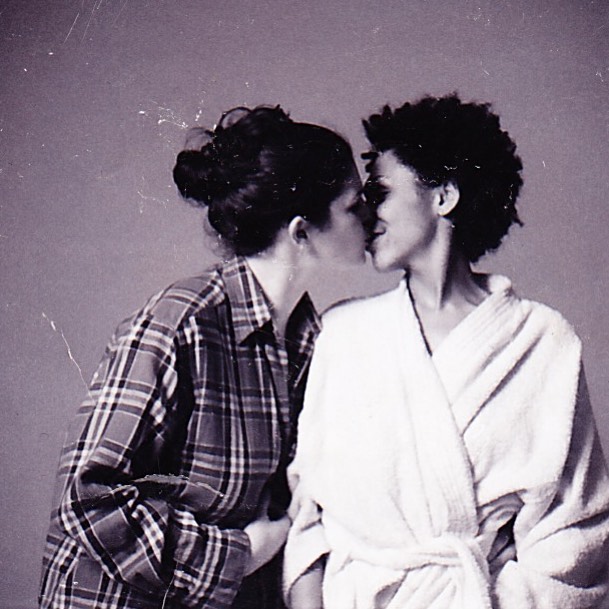
Jessica: I was so enthralled; I was just smitten with her! I was a spaz. I could not stop talking about her to my family and my friends. Every other word was “Caroline this” and “Caroline that.” Eventually we hooked up, and I told her at the time that I just wanted to just be friends with benefits. “I’m in college, I want to explore my options, blah blah blah.”
Caroline: I think your Catholic upbringing is why it took so long.
Jessica: I 100% agree, because I was hanging on, I fought it. Eventually I was like, “OK, let’s make this real, and we’ll start dating.” I still was not out to my family, but after we’d been dating a year, I knew I needed to tell them. I went home without Caroline to visit for some celebration, and I decided I’d tell my parents while I was home.
Well, I was with my friends, and I got so blind drunk that my friends who were also drunk freaked out and called 911, and I wound up in the hospital. I had alcohol poisoning, but not so bad that I actually had to go to the hospital. I came to in the hospital with my mom sitting there. I thought, “Oh, there’s my mom, fucking great! This is terrible, this is the lowest point, this is just the icing on the cake because I know what I have to tell her, and I might as well tell her now.” The first words when I came to and saw my mom were, “Mom, I have something to tell you. I’m gay.”
She said, “I know.” I said, “Ma, I’m dating Caroline. She goes, “I know!” And that’s my coming out story. My sisters already knew. My mother was the big one for me, because she’s quite religious. I was afraid to tell my father, but I don’t know why I was so scared since he was the easiest. It was all incredibly stressful.
PIP: Caroline, what was your coming out story?
Caroline: Well, it comes full circle; Jessica’s story isn’t quite what it seems until I tell you mine. I grew up on Staten Island here in New York, and what’s thought of as like the Ohio of New York, which is funny since she grew up in Ohio. It’s very conservative here, and when the Trump administration was running, it was the first time people here voted blue. I grew up in a very, very red area, just like Jess.
It’s an island, and it feels like a strange small town in Steven King novel. You’re always sized up by everyone wherever you go, like, “Who the fuck are you and why are you here?” kind of thing. And I always just felt wrong. I cannot remember a time in my life, honestly, where I felt like I belonged.
As a kid, I’d steal porno magazines from my older brothers. That’s why one of our cards actually says, “I knew you were gay before you did.” I was thinking of my brothers; they just knew. Like, “Dude you were a kid stealing our porno magazines! You had a real curiosity about women.”
But being gay was never talked about. It was the reason why I always felt wrong, because I didn’t know anyone who was gay, and if anyone ever was, it was always a whisper: “Ooh, I think that person’s gay, but we’re not going to talk about it.”
What do you assume about this as a kid ? I thought it was a terrible thing. I didn’t have a religious experience like Jessica where it was shoved down my throat; I’m Jewish, and I’ve never been conservative. We just observed the normal holidays and it was not the experience that Jessica had. It was more of like, everything is underlying, this doesn’t even exist, and if it does exist, it’s wrong and talked about under the table. So why do you think I always thought I was wrong?
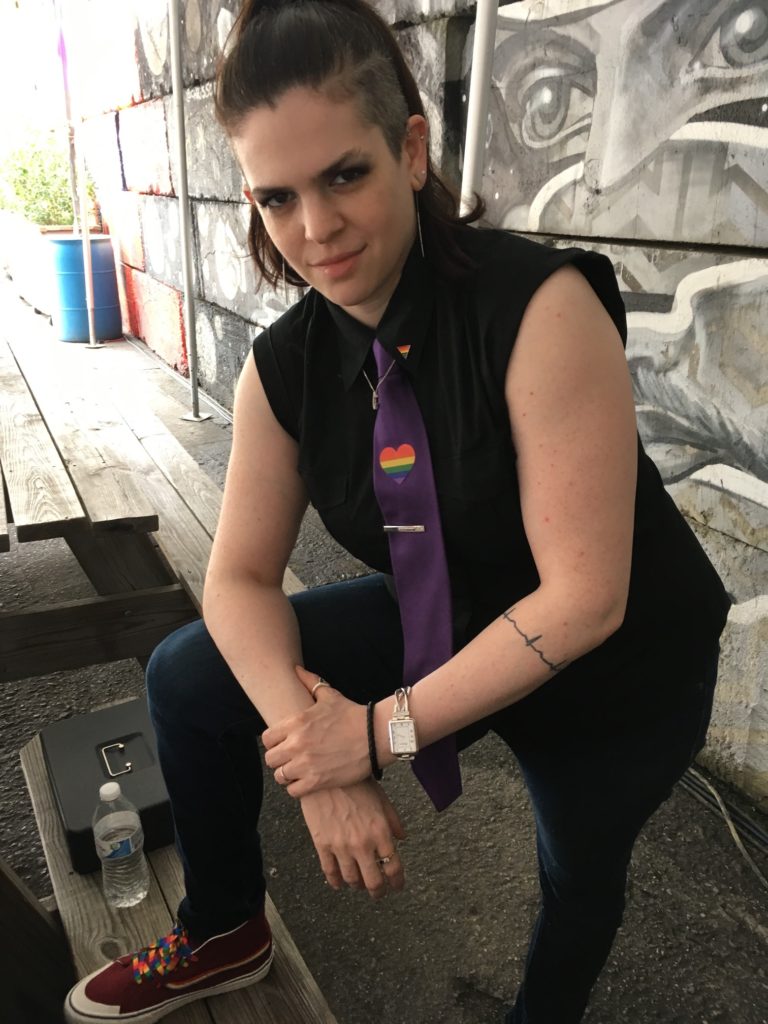
I tried to experiment with friends as a kid; it was just very obvious. But I went down that same path as Jessica; when I was at an age when it was acceptable to start dating boys, I full force went into that because I was denying myself. I knew there was something there with girls, but the way other girls always talked about boys — I never, ever felt that way. I always felt completely out of place. Then, similar to Jessica, I forced myself and felt like, at least I can try to also be attracted to the opposite sex so I can have an opportunity to lead a “normal” life.
It really came to a head when there was a girl in high school who I was infatuated or obsessed with. My father was very sick at the time; he passed away when I was 18. He was my best friend. Unfortunately I didn’t venture out the way other people do, and my best friend was really my father. He was very sick my entire life from diabetes and didn’t take care of himself. At the end of his road, he heard me from two floors down his one night.
This girl and I had been chatting online maybe three years out of the four years of high school, and she’d tease, then back away and not want anything. It was the AOL days. One night after all this time of me thinking I was getting somewhere, she tells me that she just fucked this guy eight times and it was absolutely incredible and that I’d been this obsessive freak.
It was so horrible that I wound up in this fetal position crying on the floor. My father was going through all this pain, but he heard me from two floors down in the house; my mother was sleeping on the same floor but didn’t hear me. My father called me and said, “Why don’t you come down here?”
I had to tell someone. I told my dad, but in the way that I was thinking at the time. I said, “Dad, I’m bisexual.” His answer to me was, “You don’t have to be that.”
PIP: Did he mean that you didn’t have to call yourself bisexual, that it was OK to actually be gay?
Caroline: Exactly. I cried my eyes out, because I didn’t even want to accept that. It took me years even after that. It was really meeting Jessica that helped me accept what my proclivity really was.
My dad ultimately died of complications from diabetes soon after that. I was forced to come out to my mother, who I was very afraid to come out to, from a psychiatrist who thought that I needed to go through conversion therapy and thought there was something wrong with me. I thought I was going to someone I could confide in, and then he forced me to tell her in front of him. I remember telling her at the time that I’d lost my virginity to a man to relieve her and give her a feeling that there was hope. I’m just grateful that my father was alive for her to talk to, because he helped her a lot.
I continued to date men and sleep with men and try to be attracted, and I just couldn’t be. I was dating this guy I thought I liked maybe; I was really trying. But I started to date Jessica, and there was no comparison. As soon as I dated her, I had to end it with him immediately. I thought, “I know what I am, I can’t do this.” It wasn’t serious with us so I didn’t break his heart.
It’s weird talking to you about this, but I think it was me and Jess meeting each other when we were 19 and 20 that finally made each of us realize that we were really gay.
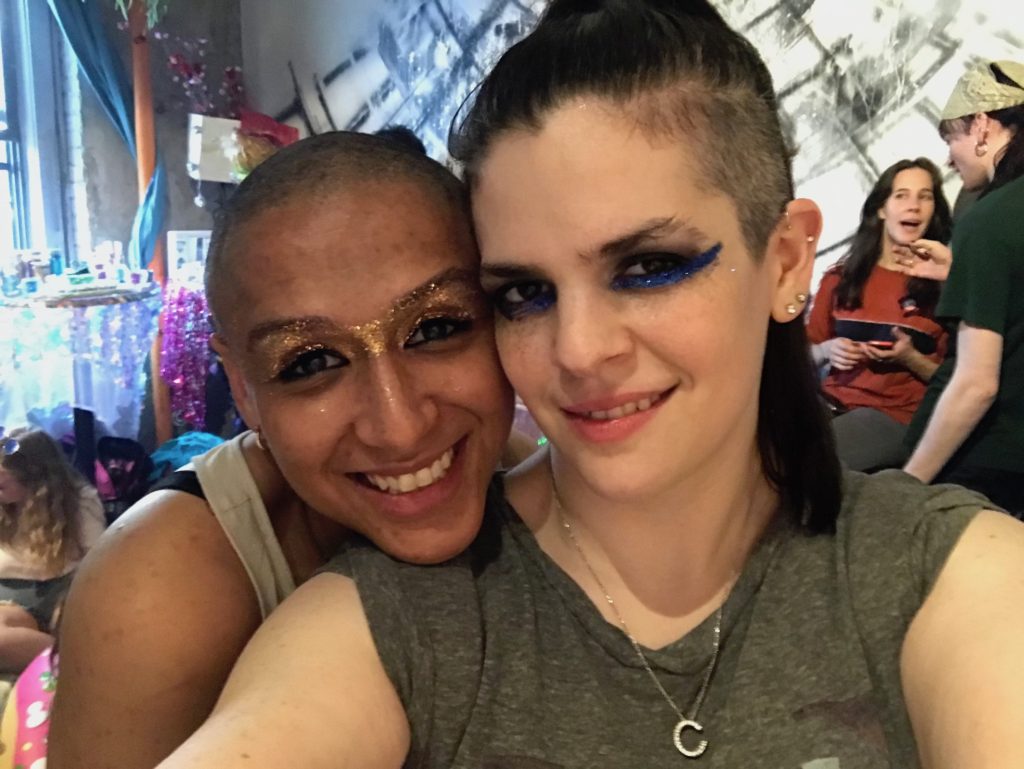
PIP: That’s incredible that you were able to play that supportive role for each other.
Caroline: Yes, though I want to bring this full circle with our parents. My mother had the kind of reaction that I appreciate, which is, she had a hard time with it in the beginning, and she expressed it. Jessica was around a lot after my father died; we were having dinner with my mother every night because she had no one, so my mom was part of the beginning of the relationship. She’d say, “Why can’t you girls find two boys that you love and live next to each other and be best friends?”
She was a teacher and would come home and say how frustrated she was because someone at school said something horrible about lesbians, how they’d never let a lesbian teach there, and she couldn’t say anything because she was afraid. This woman evolved over the years to saying something to those people.
Saying, “What’s wrong with lesbians? My Caroline is a lesbian and she’s a wonderful human being.” Talking about “her girls” and taking us out to dinner when Obergefell happened, and saying “my daughter and her wife.” It was amazing; she had a true revolution. Now I’ll let Jessica go back to what happened with her mom for the full circle.
Jessica: Unfortunately, I still have a hard time believing this even happened with my mom. She came across as very accepting and loving for eight years. It was wonderful; I thought I was going to have issues and there were none. I felt lucky. Then eight years into the relationship, Caroline proposed to me. We were in Chicago at the time; Caroline had just finished her master’s degree in medical illustration.
I called my mom to tell her the news, and she seemed very not thrilled. I don’t know why, but she said, “I thought you were going to break up.” I said, “Why did you think that?” She said she heard it from one of my sisters. It was just the grapevine of gossipy sisters to my mother. To this day, I don’t even understand why anyone would have said that. That was her reaction to us getting engaged; it wasn’t happy. It was just, “Oh, I thought you guys were going to break up.”
We tried to remain excited. People say that you should start your guest list as soon as possible, and I think I was scared because I know we have a very religious family. So I called my mom a day or two later and asked who in our family I should invite.
There was a pause, and she said to me, “I don’t think anyone is going to come to your wedding.” That took me aback. Because we’d been together for eight years, Caroline had attended many family functions and Christmases and holidays. The people who my mom was saying weren’t going to come knew and welcomed me and Caroline and our relationship.
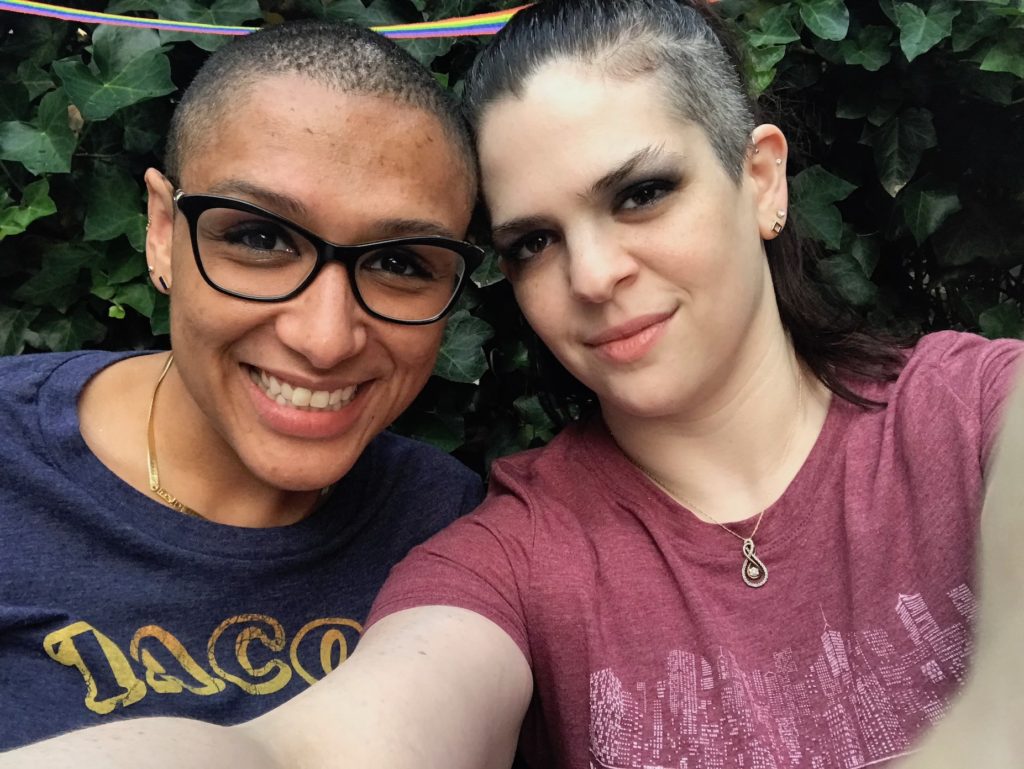
Caroline: Also, her mother’s sister and father’s brother married each other, so she has five of these very close cousins because of how they’re connected.
Jessica: My mom said she talked to my aunt Beth, her older sister, who she looked up to, and that nobody is going to come. For some reason my mother also wanted to share this information with me: that my aunt Beth says that children who are adopted should never have been adopted, they should seek out their birth family — their blood — because adoption causes kids to do horrible things like be gay.
So wow, that’s a whammy my mom hit me with. Not only is nobody coming to my wedding, but nobody in the family accepts me anyway because I’m adopted. A lot of this is stuff I didn’t really remember until Caroline jogged my memory down the line. There was a time I blocked out a lot of what happened just to deal.
It doesn’t end there, because as we got closer to the wedding, which we’d planned for a year, everyone knew exactly where and when it was. Then I got flooded with emails from all my cousins saying, “Why weren’t we invited to the wedding?” I was furious; I said, “This is what happened, you don’t accept me!” They’re like, “What are you talking about?”
Long story short, I ended up inviting every single one of them. We weren’t making our cards for the business yet, but we handmade all of our wedding invitations, and they weren’t easy. They were tri-fold and upholstered — we went a little crazy for our wedding.
We had to make all of them for these people, that later on ended up not coming anyway. They all came up with excuses, like “my daughter has a ballet recital.” Someone said to my little sister, “I can’t take my kids to this wedding, what am I going to tell them with two women up there?” My mind was just blown; to this day it’s blown. I can’t believe that it was my family that for so long, and for eight years of our relationship, had accepted us supposedly, and low and behold, they didn’t really. It was just for show.
My heart is broken to this day. I’ve realized these past couple years that I do not have the same relationship with my family now; I just don’t feel that connection with them anymore. My immediate family almost didn’t come as well. A month before the wedding, my mom sent me an email and said, “I’m not coming to the wedding unless you get off all medications and go seek counseling.”
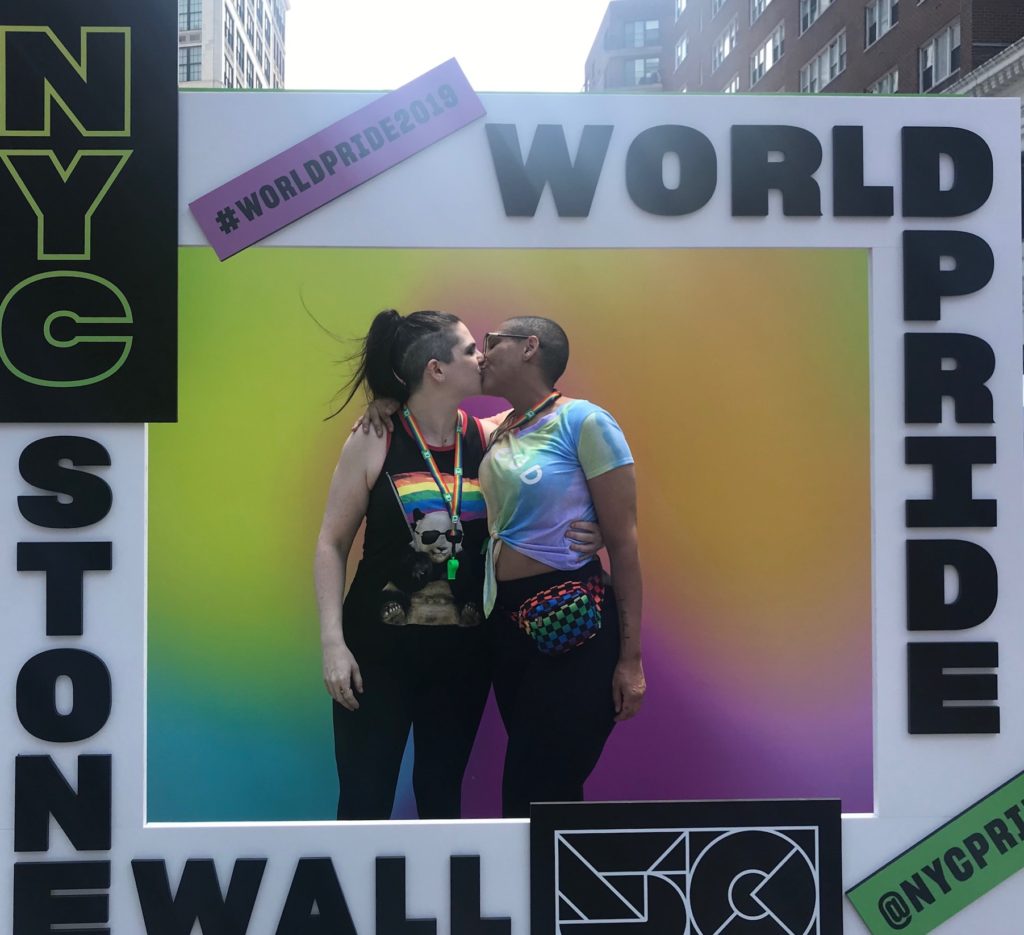
Caroline: She had this whole list. Jessica has anxiety, and I have depression. She was demanding that we get off of our medications and seek counseling, and also seek spiritual counseling. And we had to be completely financially independent, because we had this sweet deal in Manhattan where we were living with my aunt who was really sick and helping take care of her. Why demand that?
Jessica: So she makes all these demands, and I’m like, “Mom, that’s not happening, sorry.” She said they weren’t coming. Then I called my little sister upset, because she and I we were very close; she was my best friend growing up. She said, “If Mom’s not coming, I can’t come to the wedding.” Ultimately my immediate family came. But that’s the whole story of my coming out — it came in two parts.
PIP: Wow. That’s wild that one family was immediately supportive and later abandoned you, while the other struggled at first but then became your champions. I’m sorry for the pain you’ve gone through. What led you to then start J. Caress Studio?
Jessica: Funny enough, our wedding. It really did plant the seed, because I’d loved that we made our wedding invitations, though the business wasn’t even a thought then. The day after our wedding, we started opening up our cards and reading them.
We opened up one that was a great gay wedding card with rainbow hearts or something generic. We thought it was precious someone took the time to do that. But as we kept opening them, we ended up getting like five of that exact card from different people across the country. We were like, “How can there be just one card for people to possibly find? That doesn’t seem right!”

Caroline: That planted the seed for us, back in 2011. We talked about it and thought “we should do this,” but we didn’t do anything about it because we were in our respective jobs.
Then in 2015, my aunt came out later in life and she married the love of her life, and we went to their beautiful destination wedding in Florida. They basically took us under their wing, because they’re two strong entrepreneurial women; they each have their own successful businesses. They’re big sources of inspiration for us. We’ve always been very creative people and we’ve always wanted to do something together. We know that we’re lucky because we don’t ever tire of being around each other — we love working together — and we know that’s not common.
Once my aunt got married, literally the same thing happened to her with the cards. Except this was in 2015 after Obergefell happened and marriage equality was the law of the land. You’d think there would be more businesses out there with more options for people to find.
The first card she opened about two women falling in love, she cried. She was like, “I want to get a card for the person who took the time to find a card about two women being in love.” That’s how touched she was. Then a couple gifts later, she opened another card, and it was the exact same one. She already knew I had this idea.
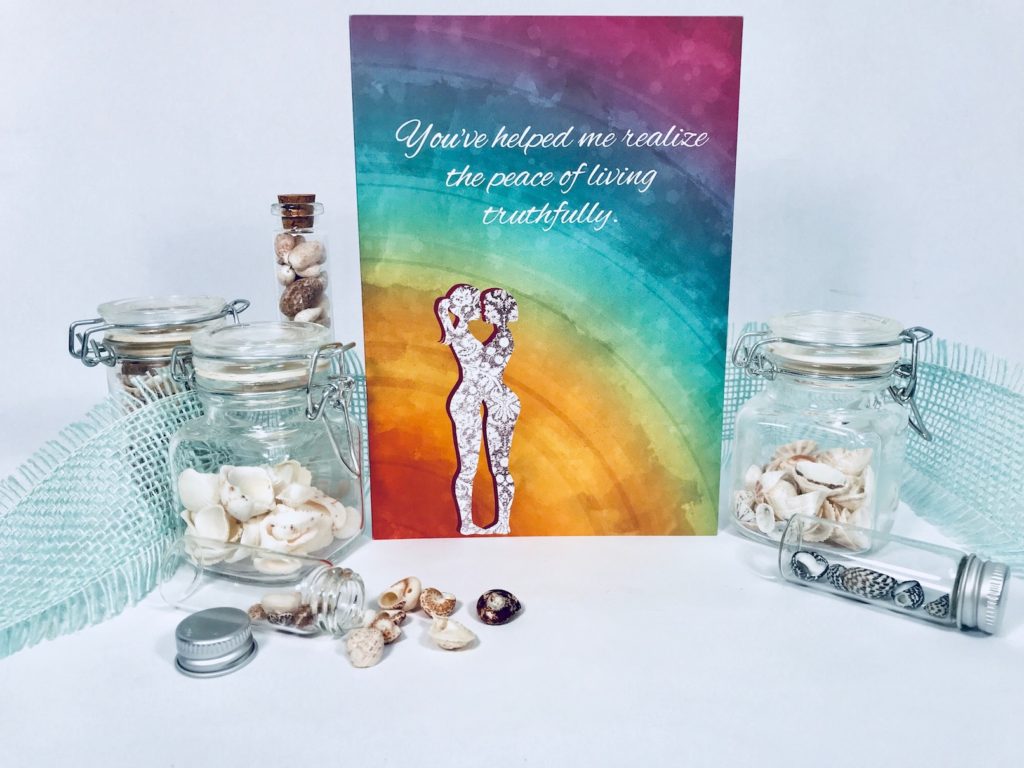
She was like, “Hmmm, well this is still very nice, I’ll give it the benefit of the doubt.” Then happened again. She looked at me and was like, “That’s it!” I got the approval from my aunt, my father’s sister, and I had such respect for her. That was late 2015, and in 2016, we started working on turning it into an actual business.
Jessica: They helped us make a business plan, so we had a structure, which was very important. Now I work a couple retail jobs to basically pay bills and also do our business, because we end up doing a lot of vending. We just try to promote ourselves like crazy, so I supplement on the rest.
Caroline: Jessica is the workhorse who brings in the money that enables us to live. I left a job that paid a lot of money in order to pursue this — a job that made me very sick. I do some medical illustration on the side for some supplemental income, and in previous years I did graphic design.
I do the hustle, but this business went from having to pour money into it, to now it’s just getting to the point where there’s a little bit of profit maybe beyond being able to pay for itself. Being able to even see that happen is shocking. It’s really hard to do this with two people. Right now we’re hustling so hard.
Profiles in Pride: Can you talk about the importance of LGBTQ visibility in your work?
Caroline: We realized that in the years that we were together, we’d get cards for each other at Walgreens or Duane Reed or wherever and cross out the pronouns on the cards. We realized that with the combination of the fact that there was literally one option for people and then all these years later nobody was doing anything, it was just like, why?
We have the ability to get married now. We’re talking about being inclusive. If we’re going to be inclusive, how can we inclusive without being visible? How is that possible in any way, shape, or form? It is not. The way we got what we got is by being visible; it’s by by coming out. It’s by showing people that aunts and uncles and mothers and fathers and daughters and sons that we are all the same. It’s needing to be visible that’s going to change anything. Everything that we do is to be visible for our community.
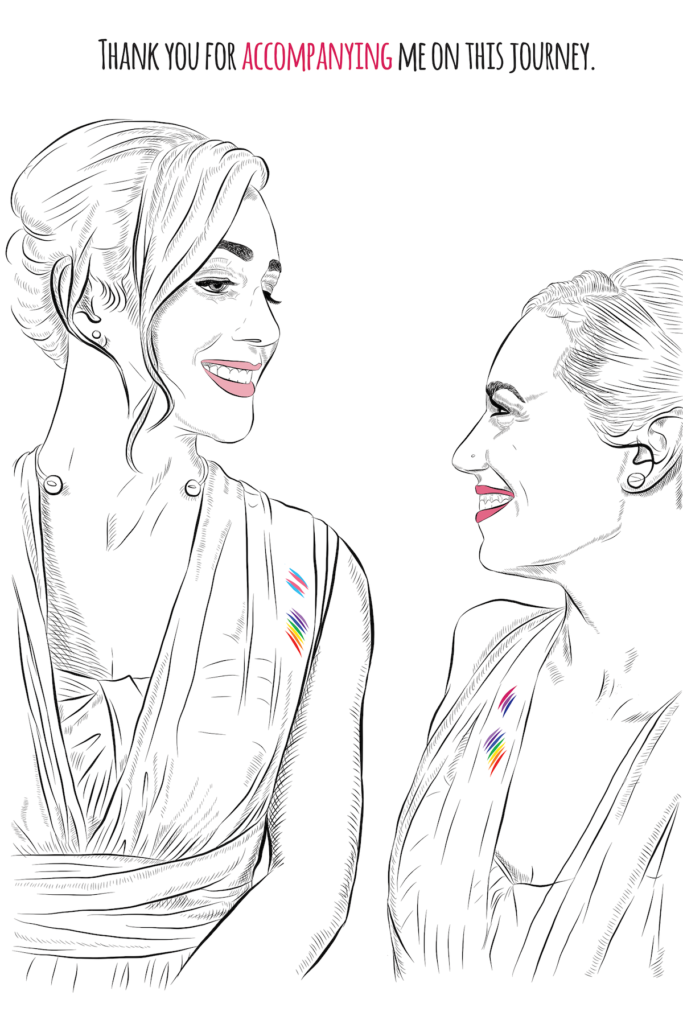
Jessica: I think also it’s important to us because we had such a lack of visibility growing up. I think especially for me because I was black, I was a lesbian, and I saw no visibility growing up. Caroline didn’t either. I had no one to relate to. Just accepting the fact that I was different from white girls — that my hair wasn’t straight, that I have a curvy ass — it took a really long time for me to accept me. Not even my sexuality, just me as a person. Then having to accept my own sexuality was also very hard because of how I grew up, and the fact that I had to put it aside for so long to deal with own my insecurities of being a woman and my race.
So I’m wanting people to feel like they’re represented. I want to give them something that I didn’t have growing up. It’s as simple as going into a drugstore or just a specialized greeting card store. We want to be in boutiques. Seeing your representation of who you are, it’s so small, but it’s such a big step in the right direction.
It’s so small, but it’s such a big deal. We see that in our work because of the heartwarming personal emails we get, and the reviews. Like the parents who write to us, parents of the gender nonconforming kids, who write reviews about how much it meant to them and how now they have a place to go for their child. It’s so simple to give someone so much love, and that’s why it’s so important.
Caroline: It really is, and even though it doesn’t bring us lots of income right now that we can feel safe with, we know that we want to push this and we know that we’re going in the right direction because of the feedback we’re getting from people to continue to share our art. We get such touching emails and reviews.

We just did this Stonewall illustration; I illustrated the outside of the building as it used to look and I illustrated what the Mattachine Society had etched on the glass about keeping the peace. It was a very small detail, and even though it’s a 4×6 card, it’s a little piece of art. We have the message on it “You only turn 50 once,” then we had “Happy World Pride 2019” on the inside.
A girl actually reached out to us and said, “Hey, I’d love this to give to my uncle as a 50th birthday gift, do you think you could print it for me so I could frame it? And what size do you recommend, a 5×7 or 8×10?” We sent her two of them, a 5×7 and 8×10 for her to choose, and we didn’t charge her extra, because we wanted her to have it. It was easy for us since we have a professional printer at home.
We sent it to her, and a week or two later we get this email from the gentleman who received it. He sought us out and said, “I am a 50-year-old HIV positive gay man, and I just received a beautiful print of yours from my niece for my 50th birthday. I want to let you know it brought me to tears and it will remain on my wall for the my rest of my days, and I want you to continue sharing your art with the world.”
We made like $5 off of it, but what we actually made was what I just told you. It makes it hard for you to say no to how hard it is; we have to keep going. We’re making the sacrifices that we need to, I’m biting my tongue staying at home doing what I can, while Jess is working her ass off in retail, and we’re trucking along.
Our ultimate goal is to get to the National Stationery Show; it’s an enormous show, and everyone who’s a buyer for every boutique goes to for the Tristate area. If we’re able to get to that, we could be hooked up with a distributor and no longer have to do everything by hand. Then we could move on to doing more art and commissions; we’d love to be able to do that. Because it’s so expensive to do something like that, we’ll probably wind up doing crowdfunding to raise money, because it’s thousands of dollars to get into these conventions.
What we’re trying to do sounds very cliche, but it’s completely about visibility and inclusiveness, and we want everyone who orders from us to feel included.
Keep up with Jessica and Caroline on their Instagram account, @j.caress.studio.
Featured photo by Julienne Schaer.
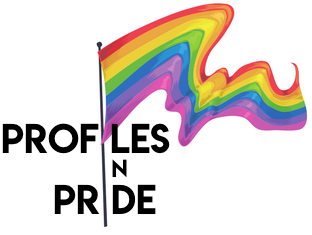
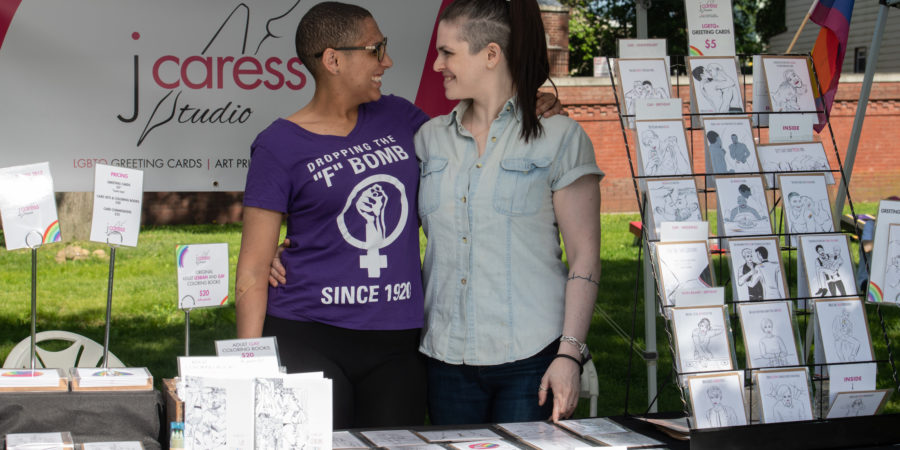
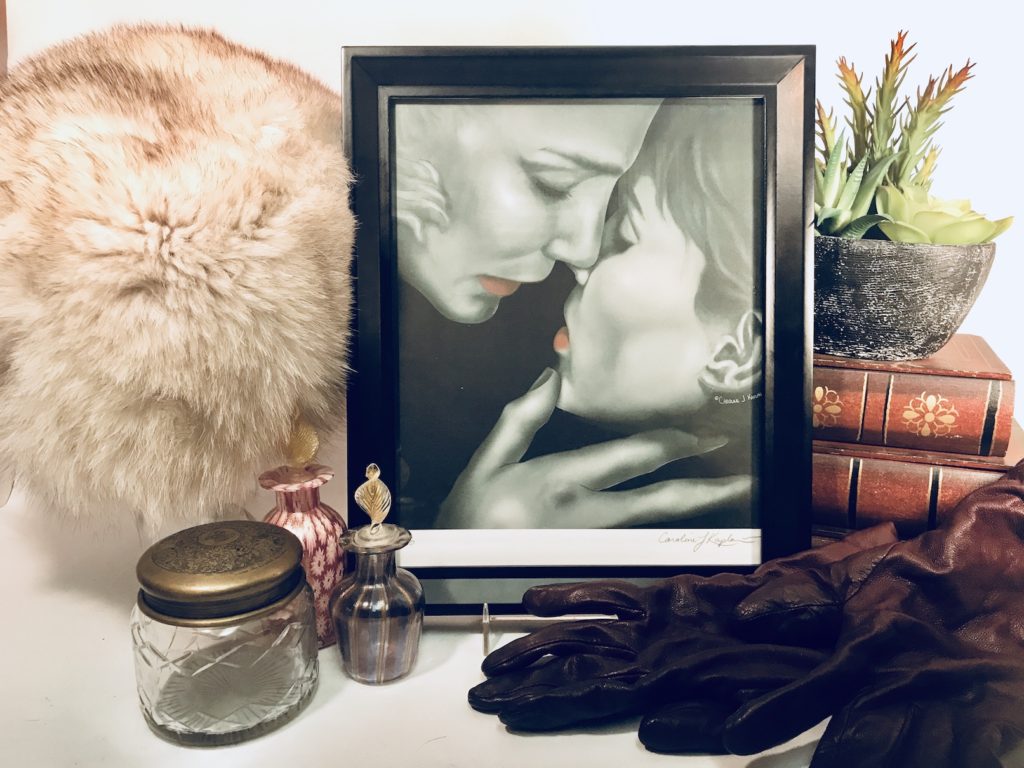
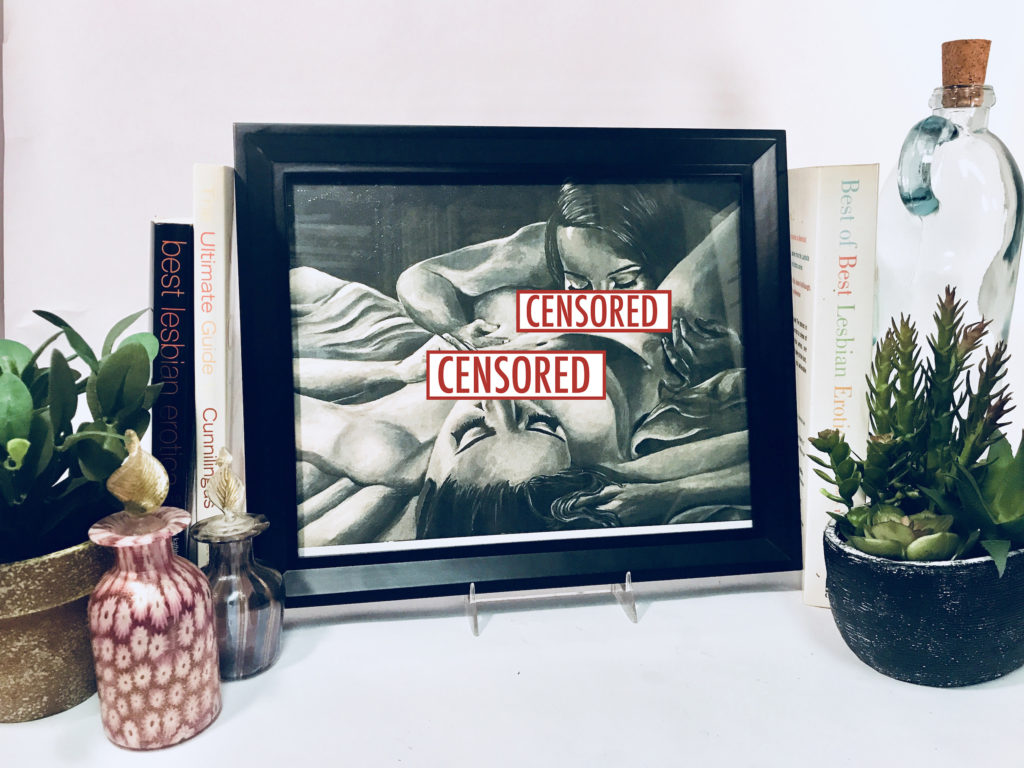
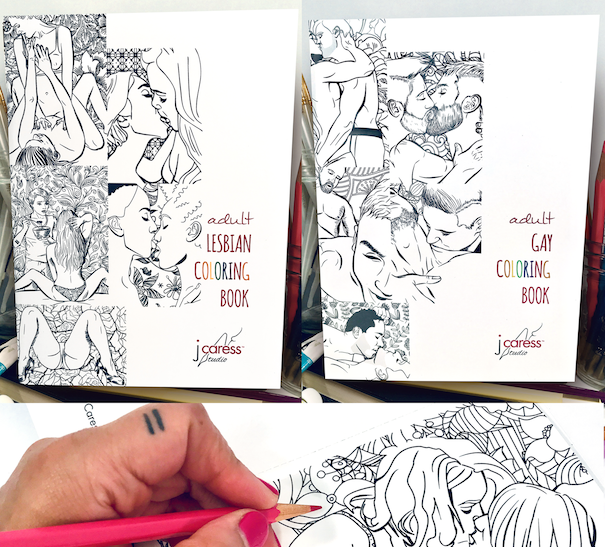
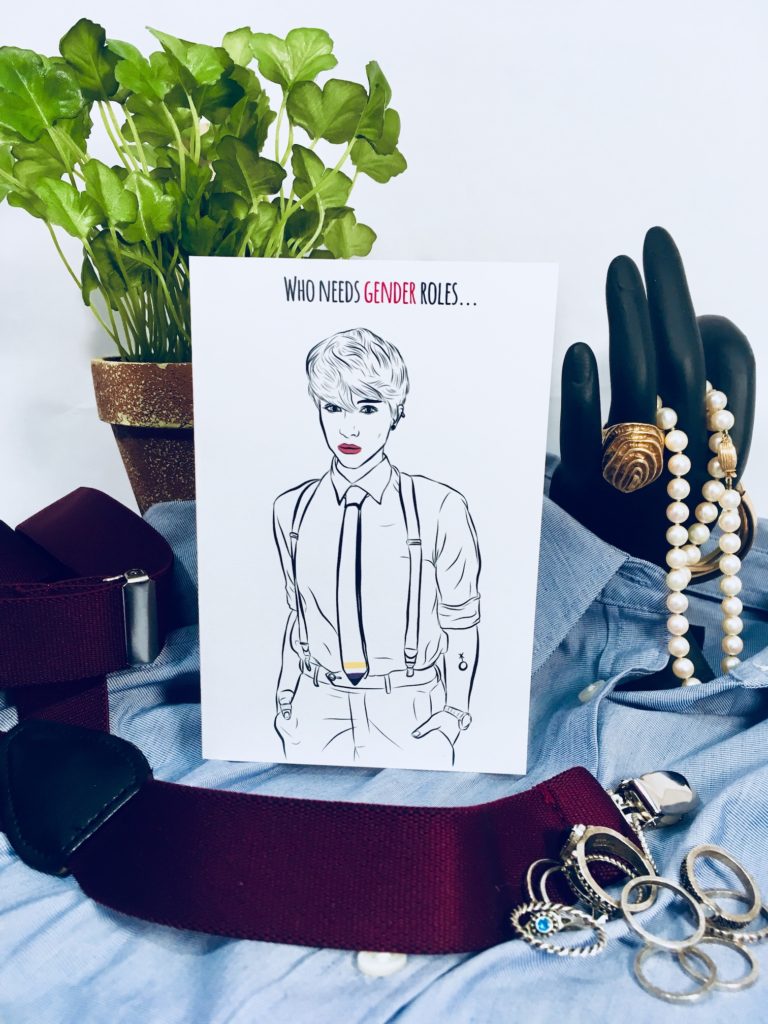
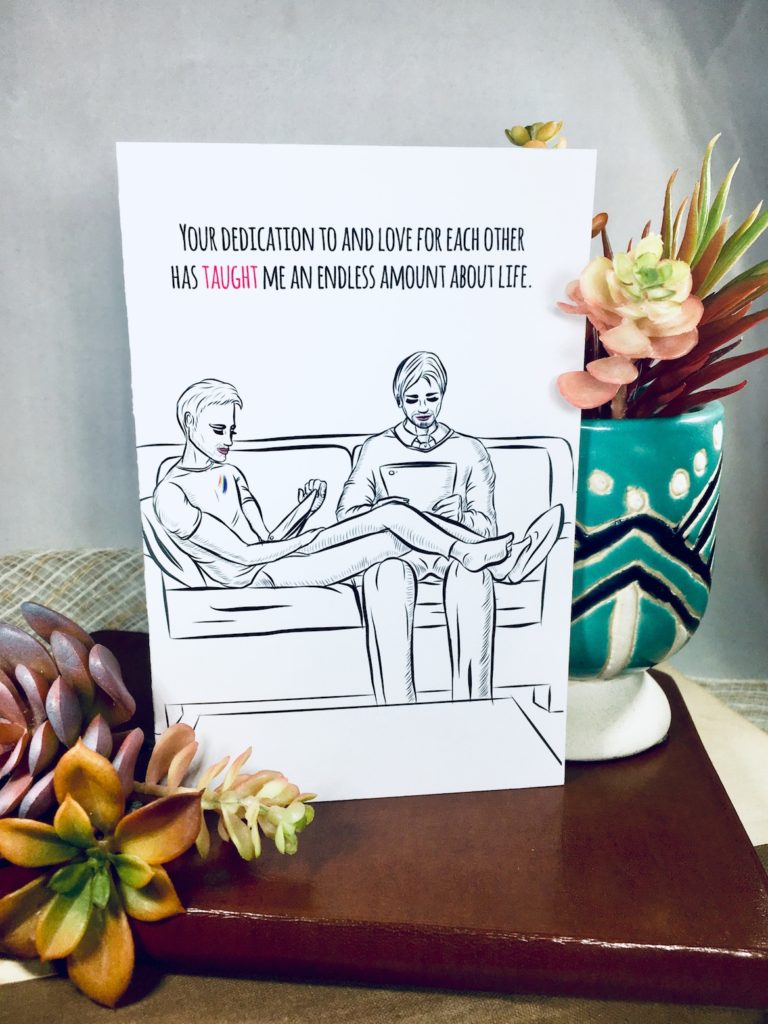
Great read! Thanks for writing and sharing.